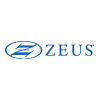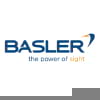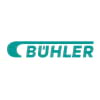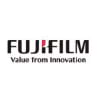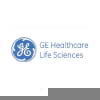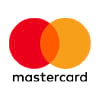Global Augmented Reality (AR) & Mixed Reality (MR) Market, By Component (Hardware, Software, Services), Deployment Model (Cloud, On Premise), Distribution Channel (Offline, Online), Device Type (Head Up Display, Head Mounted Display, Projector & Display Wall, Gesture Tracking Devices), Technology (Mobile Augmented Reality, Monitor-Based Technology, Near Eye Based Technology), Application (Workflow Optimization, Marketing Collaboration, Enhanced 2-D & 3-D, Visualizations, 3D Modelling, Documentation, Navigation), End User (Retail & E-Commerce, IT & Telecommunication, Automotive, Aerospace & Defense, Healthcare, Animation, Travel & Tourism, Energy, Media & Entertainment, Education, Construction, Games & Sports, Banking) - Industry Trends and Forecast to 2029.
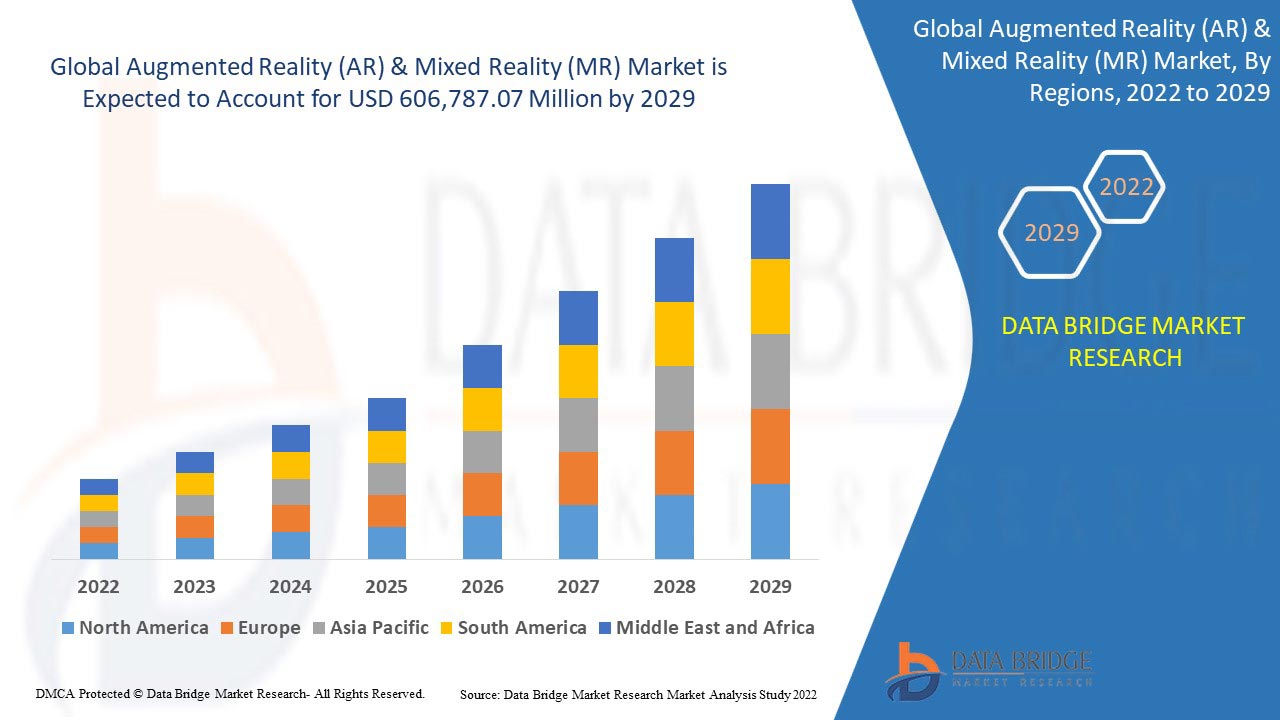
Augmented Reality (AR) and Mixed Reality (MR) Market Analysis and Size
Augmented reality and mixed reality have brought a new change to digitalization. It has now become easier to experience the real world by setting different environmental conditions. Augmented reality & mixed reality has a wide range of applications, the growth of the market increased highly as the use of augmented reality and mixed reality became popular in driving simulators. The augmented reality and mixed reality provide the driver with a real sense of the road, driving conditions, car manuals, and road traffic that helps avoid accidents at an initial stage of learning and prepares the drivers for various situations. These attributes have led to an increased usage of augmented reality and mixed reality in defense and aerospace also. The army personnel used it for training in various conditions such as parachute jumping, submarine, combat situations, and driving in various environmental conditions.
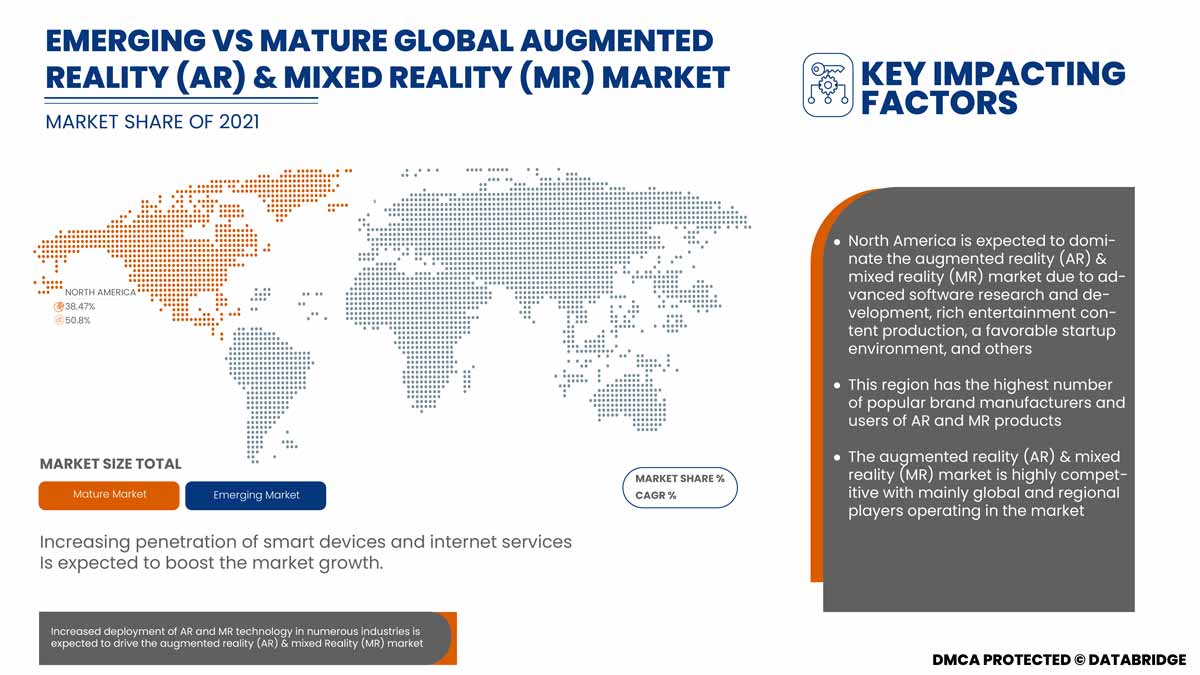
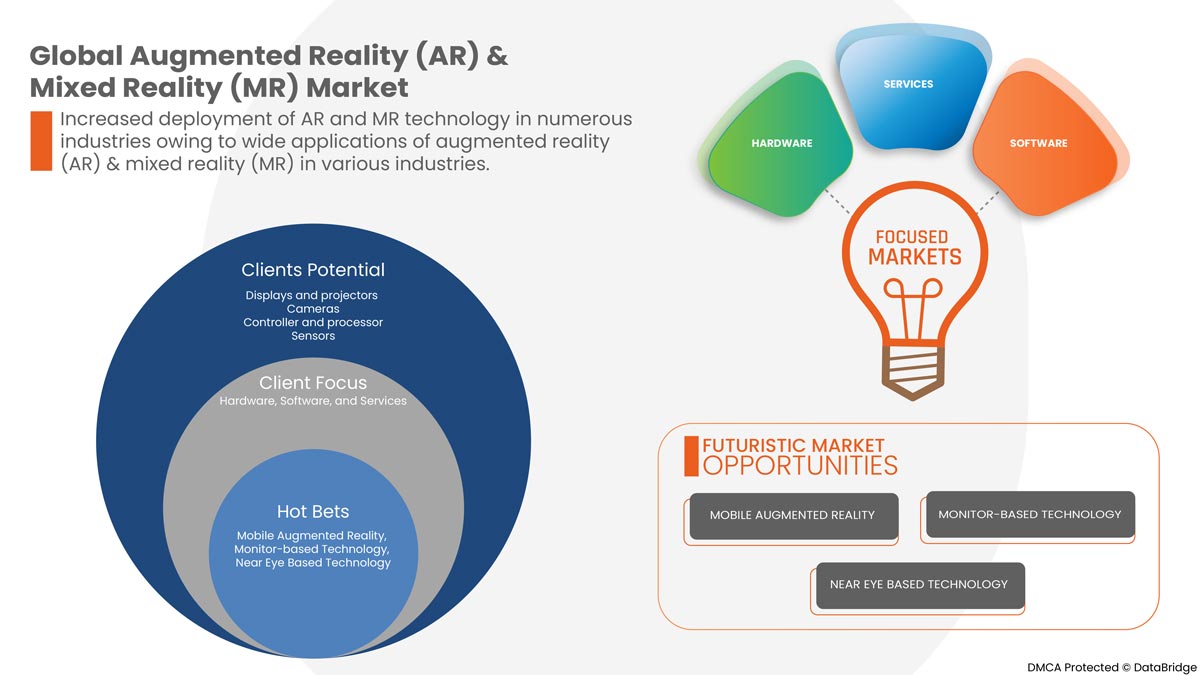
Data Bridge Market Research analyses that the global augmented reality (AR) & mixed reality (MR) market is expected to reach the value of USD 606,787.07 million by 2029, at a CAGR of 50.5% during the forecast period. The hardware segment accounts for the largest component segment in the augmented reality (AR) & mixed reality (MR) market. The augmented reality (AR) & mixed reality (MR) market report also covers pricing analysis, patent analysis, and technological advancements in depth.
|
Report Metric |
Details |
|
Forecast Period |
2022 to 2029 |
|
Base Year |
2021 |
|
Historic Years |
2020 (Cusomizable to 2019-2014) |
|
Quantitative Units |
Revenue in USD Million, Pricing in USD |
|
Segments Covered |
By Component (Hardware, Software, Services), Deployment Model (Cloud, On Premise), Distribution Channel (Offline, Online), Device Type (Head Up Display, Head Mounted Display, Projector & Display Wall, Gesture Tracking Devices), Technology (Mobile Augmented Reality, Monitor-Based Technology, Near Eye Based Technology), Application (Workflow Optimization, Marketing Collaboration, Enhanced 2-D & 3-D, Visualizations, 3D Modelling, Documentation, Navigation), End User (Retail & E-Commerce, IT & Telecommunication, Automotive, Aerospace & Defense, Healthcare, Animation, Travel & Tourism, Energy, Media & Entertainment, Education, Construction, Games & Sports, Banking) |
|
Regions Covered |
U.S., Canada and Mexico, Germany, U.K., France, Italy, Spain, Netherlands, Switzerland, Russia, Sweden, Poland, Belgium, Turkey, Rest of Europe, China, Japan, South Korea, Australia, India, Taiwan, Thailand, Singapore, Malaysia, Vietnam, New Zealand, Indonesia, Philippines, Rest of Asia Pacific, Saudi Arabia, U.A.E, South Africa, Egypt, Israel, Rest of Middle East and Africa, Brazil, Chile, Argentina, Peru and Rest of South America |
|
Market Players Covered |
HP Development Company, LP, HTC Corporation, Autodesk Inc., Barco, Intel Corporation, PTC, Seiko Epson Corporation, Ultraleap Limited, ASUSTek Computer Inc., Dell, Google (a subsidiary of Alphabet Inc.), Sony Corporation, Lenovo, Microsoft, SAMSUNG ELECTRONICS CO., LTD., Panasonic Corporation, RealWear, Inc., Magic Leap, Inc., EON Reality, and TeamViewer among others |
Market Definition
Augmented reality is a technology which uses the existing user's environment and overlays the digital or virtual content or information over it to offer an immersive digital experience in a real-time environment. Augmented reality applications are developed on special 3D programs, which enable developers to integrate contextual or digital content with the real world in real-time. Augmented reality offers interactive experiences through multiple sensory modalities, including haptic, auditory, visual, somatosensory, and more. The technology has a wide range of applications in entertainment, training, and educational areas. Industries such as manufacturing, healthcare, and logistics, among others, are more focusing on adopting this technology for training, maintenance, assistance, and monitoring applications.
Mixed reality symbolizes the controlled collision of the AR/VR and IoT trends. Mixed reality (MR), also referred to as hybrid reality, is the technology that is used to merge real and virtual worlds and produce new environments and visualizations where physical and digital objects co-exist and interact in real time. Mixed reality is an interdisciplinary field involving computer graphics, signal processing, computer apparition, user interfaces, mobile computing, wearable computing, information visualization, and the design of displays and sensors. Mixed reality concepts are increasingly being adopted by various industries, including automotive, healthcare, and office environments, among others.
Market Dynamics
This section deals with understanding the market drivers, advantages, opportunities, restraints, and challenges. All of this is discussed in detail as below:
Drivers
- Increasing penetration of smart devices and internet services
With the introduction of smart devices, AR has provided valuable opportunities for retailers to engage consumers, showcase their products, and create a competitive advantage, which is expected to drive the global AR (augmented reality) & MR (mixed reality) market significantly.
- Rise in adoption of augmented reality by educational institutes
AR in education allows students to gain knowledge through rich visuals and immersion into the subject matter. Moreover, speech technology also engages students by providing comprehensive details about the topic in a voice format. Therefore, the concept of e-learning with AR has become an essential strategy for gathering information, which is expected to drive the global AR (augmented reality) & MR (mixed reality) market significantly.
- Increasing focus on cyber-physical systems
Augmented Reality (AR) enables intuitive and efficient human-machine interactions between humans and CPMT (Cyber-Physical Machine Tool). As cyber-physical security systems become model-based and leverage augmented, virtual, or mixed reality, the gaps between training, planning/analysis, and situational awareness simulations disappear. Through a model-driven contextual interface, users can experience a virtual representation of a real-world facility.
- More of technological advancement and digitization
The continuing convergence of digitalization in the real and the virtual worlds have become the main factor of innovation and change in all sectors of our economy. Augmented Reality Technology (AR) has become one of the critical digital transformation technologies in industrial and non-industrial areas. The rise of augmented reality has transformed lives and day-to-day operations in technology, hospitality, healthcare, and other sectors. The use of augmented reality helps the customers understand the product or the service with more ease and helps them make the decisions easier. In addition, augmented reality can also help build and improve the organization's brand image by giving the customers a seamless buying experience.
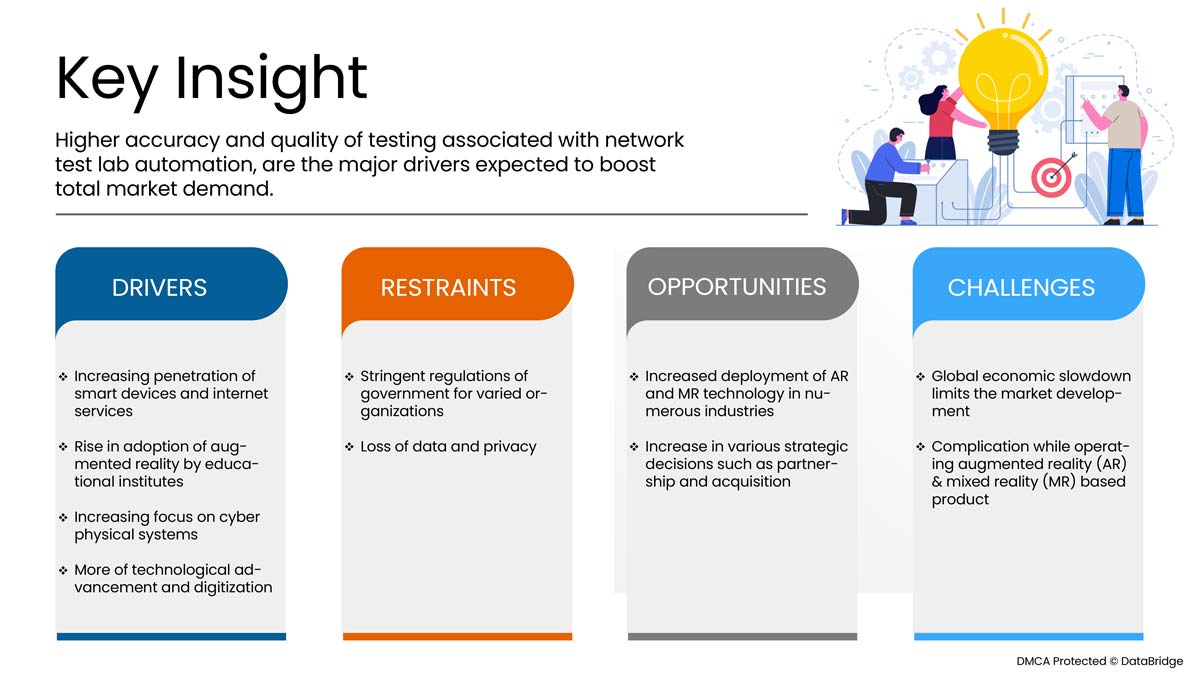
Opportunities
-
Increased deployment of AR and MR technology in numerous industries
The applications in various industrial sectors, especially in the defense industry, extensively use augmented and mixed reality. It is expected to create opportunities for the global AR (augmented reality) & MR (mixed reality) market.
Restraints/Challenges
- Stringent regulations of government for varied organizations
AR (augmented reality) and MR (mixed reality) devices and applications are already subject to several laws and regulations governing individual privacy and user data across the countries. However, the current regulatory landscape addresses only some of the risks of using augmented reality devices. Specific requirements complicate the data collection necessary to provide robust and secure immersive experiences across sectors.
COVID-19 Impact on Augmented Reality (AR) & Mixed Reality (MR) Market
COVID-19 created a major impact on various industries as almost every country has opted for the shutdown of every facility except the ones dealing in the essential goods segment. The government has taken some strict actions such as the shutdown of facilities and sale of non-essential goods, blocked international trade, and many more to prevent the spread of COVID-19. The only business which is dealing in this pandemic situation is the essential services that are allowed to open and run the processes.
The increased usage of augmented reality-based devices has provided significant opportunities amid the covid-19 pandemic. Although consumer purchasing power has been greatly diminished as a result of the coronavirus-induced economic slump, resulting in the decline of profit margins in organizations. While many key marketers and leaders saw signs of improvement from past years, it remains difficult to ascertain the actual market situation as the pent-up demand may be covering up a lower intrinsic level of demand for AR-based devices. The increase in AR smartphone applications, the rise in demand for remote collaboration, and technological advancements in medical applications are some of the factors driving the growth of the augmented reality and mixed reality market.
Manufacturers are making various strategic decisions to meet the growing demand in COVID-19 period. The players were involved in strategic activities such as partnerships, collaborations, acquisitions, and others to improve the technology involved in the Augmented Reality (AR) & Mixed Reality (MR) market. With this, the companies will bring advanced and accurate solutions to the market. In addition, the government initiatives to boost digitization across industries have led to the market's growth.
Recent Developments
- In April 2021, Microsoft announced a Pentagon contract with the U.S. military for augmented reality headgear for soldiers worth USD 21.88 billion. This HoloLens will deliver soldiers more efficient visibility, next-generation night vision, and situational awareness for any war. This has also helped the company to transcend the traditional boundaries of space and time in the field of AR, thereby expanding their products in the market
- In July 2021, SAMSUNG ELECTRONICS CO., LTD. expanded its contactless offerings for consumers with a new Augmented Reality (AR) enabled service for its flagship products. With this, consumers may virtually experience a product in their homes, check product dimensions, and make an informed selection with the AR service. This has also helped the company to expand its product portfolio in the augmented reality market
Global Augmented Reality (AR) & Mixed Reality (MR) Market Scope
The augmented reality (AR) & mixed reality (MR) market is segmented on the basis of component, deployment model, distribution channel, device type, technology, application, and end user. The growth amongst these segments will help you analyze meager growth segments in the industries and provide the users with a valuable market overview and market insights to help them make strategic decisions for identifying core market applications.
By Component
- Hardware
- Software
- Services
On the basis of component, the global augmented reality (AR) & mixed reality (MR) market is segmented into hardware, software, and services.
By Deployment Model
- On-Premise
- Cloud
On the basis of deployment model, the global augmented reality (AR) & mixed reality (MR) market is segmented into on-premise and cloud.
By Distribution Channel
- Offline
- Online
On the basis of organization size, the global augmented reality (AR) & mixed reality (MR) market is segmented into offline and online.
By Device Type
- Desktop
- Head Up Display
- Head Mounted Display
- Projector And Display Wall
- Gesture Tracking Devices
On the basis of device type, the global augmented reality (AR) & mixed reality (MR) market has been segmented into head up display, head mounted display, projector and display wall, and gesture tracking devices.
By Technology
- Mobile Augmented Reality
- Monitor-Based Technology
- Near Eye Based Technology
On the basis of technology, the global augmented reality (AR) & mixed reality (MR) market has been segmented into mobile augmented reality, monitor-based technology, and near eye based technology.
By Application
- Banking, Financial Services and Insurance (BFSI)
- Workflow Optimization
- Marketing Collaboration
- Enhanced 2-D And 3-D
- Visualizations
- 3d Modelling
- Documentation
- Navigation
On the basis of application, the global augmented reality (AR) & mixed reality (MR) market has been segmented into workflow optimization, marketing collaboration, enhanced 2-D and 3-D, visualizations, 3D modeling, documentation, and navigation.
By End User
- Banking, Financial Services, and Insurance (BFSI)
- Retail And E-Commerce
- IT And Telecommunication
- Automotive
- Aerospace And Defense
- Healthcare
- Animation
- Travel And Tourism
- Energy
- Media And Entertainment
- Education
- Construction
- Games And Sports
- Banking
- Others
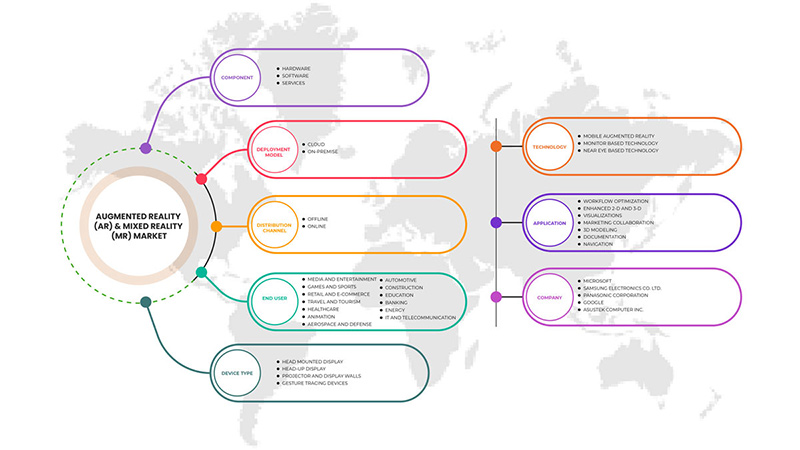
On the basis of end user, the global augmented reality (AR) & mixed reality (MR) market is segmented into retail and e-commerce, IT and telecommunication, automotive, aerospace and defense, healthcare, travel and tourism, energy, media and entertainment, education, construction, games and sports, banking and others.
Global Augmented Reality (AR) & Mixed Reality (MR) Market Regional Analysis/Insights
The augmented reality (AR) & mixed reality (MR) market is analyzed, and market size insights and trends are provided by country, component, deployment model, distribution channel, device type, technology, application, and end user as referenced above.
The regions covered in the global augmented reality (AR) & mixed reality (MR) market report are U.S., Canada and Mexico, Germany, U.K., France, Italy, Spain, Netherlands, Switzerland, Russia, Sweden, Poland, Belgium, Turkey, Rest of Europe, China, Japan, South Korea, Australia, India, Taiwan, Thailand, Singapore, Malaysia, Vietnam, New Zealand, Indonesia, Philippines, Rest of Asia Pacific, Saudi Arabia, U.A.E, South Africa, Egypt, Israel, Rest of Middle East and Africa, Brazil, Chile, Argentina, Peru and Rest of South America.
North America region is expected to dominate and is the fastest-growing region in the global augmented reality (AR) & mixed reality (MR) market due to advanced software research and development, rich entertainment content production, a favorable startup environment, and others. Moreover, this region has the highest number of popular brand manufacturers and users of AR and MR products. U.S. is expected to dominate the market as the country has highest number of popular brand manufacturers and users of AR and MR products. Whereas, China has huge adoption of technologically advanced smart wearables which fuels the adoption of AR & MR in the country. Moreover, Germany has increased investment in research and development of technology which fuels the market growth in the country.
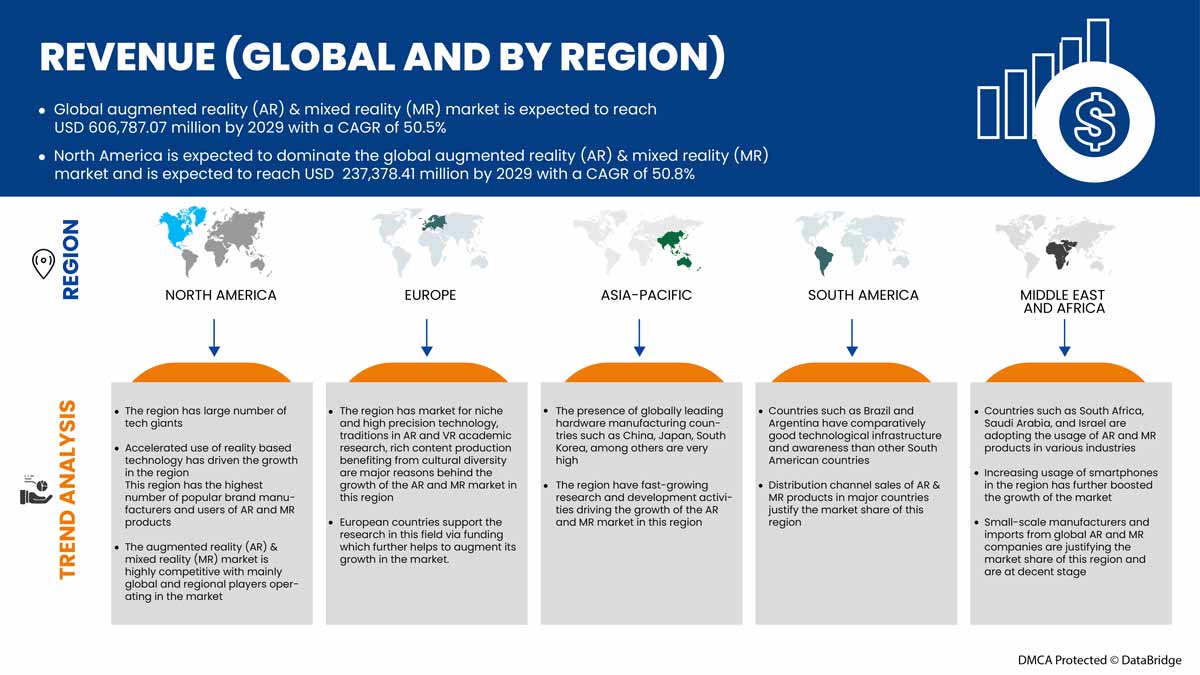
The country section of the report also provides individual market impacting factors and changes in market regulation that impact the current and future trends of the market. Data points like down-stream and upstream value chain analysis, technical trends and porter's five forces analysis, case studies are some of the pointers used to forecast the market scenario for individual countries. Also, the presence and availability of global brands and their challenges faced due to large or scarce competition from local and domestic brands, the impact of domestic tariffs, and trade routes are considered while providing forecast analysis of the country data.
Competitive Landscape and Augmented Reality (AR) & Mixed Reality (MR) Market Share Analysis
The augmented reality (AR) & mixed reality (MR) market competitive landscape provides details by a competitor. Details included are company overview, company financials, revenue generated, market potential, investment in research and development, new market initiatives, global presence, production sites and facilities, production capacities, company strengths and weaknesses, product launch, product width and breadth, application dominance. The above data points provided are only related to the companies' focus related to the augmented reality (AR) & mixed reality (MR) market.
Some of the major players operating in the global augmented reality (AR) & mixed reality (MR) market are HP Development Company, LP, HTC Corporation, Autodesk Inc., Barco, Intel Corporation, PTC, Seiko Epson Corporation, Ultraleap Limited, ASUSTek Computer Inc., Dell, Google (a subsidiary of Alphabet Inc.), Sony Corporation, Lenovo, Microsoft, SAMSUNG ELECTRONICS CO., LTD., Panasonic Corporation, RealWear, Inc., Magic Leap, Inc., EON Reality, and TeamViewer among others.
SKU-





